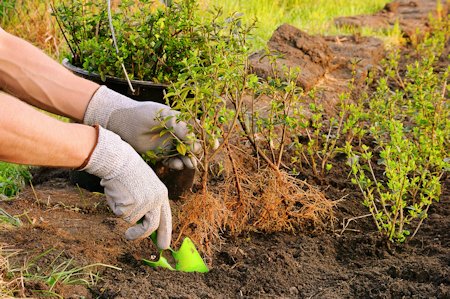What to Plant During Autumn
Autumn plants

While it may seem like planting has come to an end for the year now that the temperatures have dropped, it's not necessarily true. While the air may feel cooler, the ground is still warm and will enjoy a high level of moisture from the increased rainfall. This combination of environmental factors makes for the perfect time to plant. Some of the most common include the following;
Spring bulbs – tulips, daffodils, crocus’, muscari and hyacinths.
Hedging – conifers, laurels and euonymus.
Deciduous trees and shrubs – birch, honeysuckle, viburnum and wisteria.
Turf – pre-cut and ready to lay.
Perennials – aster, cyclamen, sedum and hydrangea.
Seasonal vegetables – peas, broad beans, cauliflower, garlic and onions.
Getting the timing right
Autumn is a great time to plant, as the ground is both warm and moist, making it an ideal environment for establishing plants.
The key to getting the timing right when planting is to ensure there are no frosts incoming, as this can impact the root development.
Making the most of existing plants
Autumn is the ideal time of year to lift and divide existing perennial plants. The best plants for splitting include hardy geraniums, hostas, rudbeckia, aster and ornamental grasses. Perennial plants that are grown in clumps can be lifted from the ground and easily divided with a spade or garden scissors.
You will want to dig around the plant, avoiding any foliage or new growth, until the root ball is loose. Depending on your quality of soil, you may want to give the plant a good watering to loosen the ground before trying to dig.

Depending on how large the plant is when you lift it, you could choose to simply split it into two, or break it into smaller sections of three or four.
Supporting plants
During autumn, wind speeds can increase unexpectedly, which may wreak havoc amongst larger shrubs and young trees. To give your plants a helping hand, you can add in supports to hold the branches in place.
There are many styles of plant support available, depending on the type of plant you need to help. For flowering plants such as dahlia or peonies, you may benefit from a support grid, support ring or an arc support. These will help to hold the flower heads up while they grow, taking the weight off of delicate stems. If you have one particularly long stem, you could add in a bamboo cane for extra support.
For plants with wide growth or large foliage, herbaceous supports will help to control the stems and keep everything contained.
When it comes to supporting trees, you want to go about it carefully. If your tree feels stable once planted, there may be no need for extra support.

A way to test is to gently push the main trunk in the middle and see if it stays in place. If it falls to an angle or feels loose in the soil, you may want to give it some support.
The best way to support trees is to drive a stake into the ground at a 45 degree angle next to the trunk. Using this as a support, fasten a tree tie around the stake and the tree.
A well secured tree should be able to flex with the wind but the root ball remains stable. It is important the tree tie is not too tight, as you want to make sure it has room for growth without restriction.








